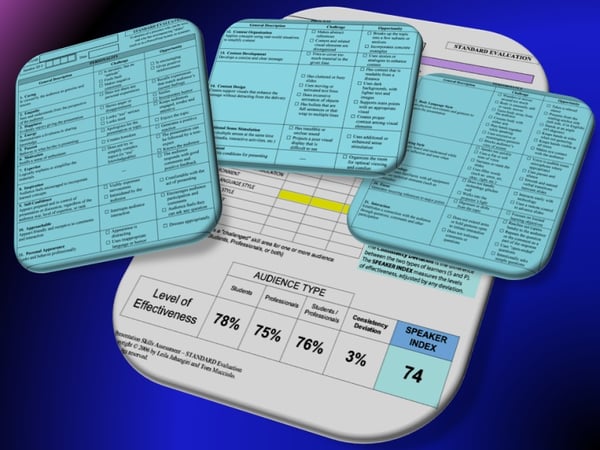Published on
Diary Of An Electronic Assessment

In the fall of 2005 at New York University, we embarked on a collaborative journey toward evaluating the performance of academicians from the perspective of learners. Our goal was to identify the factors that individuals believe contribute toward a better understanding of the information being communicated.
Although our initial focus was on academicians and students, we expanded our study to include those in the public domain who communicate content in a variety of learning settings such as continuing education, training, seminars, conferences, as well as distant learning and online webcasts. Our purpose was to identify learner preferences of effective teachers or presenters.
In our initial research, a total of 300 subjects provided 2,300 written responses to a two-question survey — based on what a person most likes and least likes in a teacher or a presenter. We expanded the reach by conducting similar methodology, offering the same two-question survey to a vast number of diverse groups encompassing students and professionals, reaching more than 1,800 individuals, from 17 countries, who provided over 15,000 responses.
In analyzing the responses from all of these other groups, the results were highly consistent with the published research findings, thereby increasing the confidence that this research has universal applications beyond the original subjects studied. Irrespective of the subject matter, it appears that learners are found to have common preferences for effective teachers and presenters.
Our findings led directly to our formal design of a series of interactive assessment tools that can be used for self, peer and group evaluation. The electronic tools are designed to be user friendly and non-labor intensive, providing immediate feedback and a measurable pathway to self-improvement. The assessment measures effectiveness levels for different audience types or learners.
Student learners are in a required learning mode and use the gathered information in the short-term. Traditional students fall into this category, as well as anyone being trained in postgraduate education. The content taught to this group is typically considered to be a “necessary” component of their learning.
Professional learners are in a desired learning mode and use the gathered information to enhance an already existing profession or skill. Professional learners include those attending seminars, conferences, continuing education courses, and other events where the content is considered to be an “added value”
Our research findings suggest that different types of learners listen with a specific appreciation for particular characteristics in a teacher or presenter. Some learners attach greater significance to one skill versus another and the assessment analysis indicates the extent to which student learners and professional learners perceive a presentation differently.
Therefore, an instructor can appeal to students by focusing on those characteristics most preferred by student learners. The same instructor, in a different setting, should focus on different skills when faced with an audience of non-students, such as professional learners. For presentations to be more effective, it is important to know the type of learner (students, professionals or a mix of both) and the related preferences.
These assessment tools help identify challenges and maximize opportunities, measuring as many as 80 unique elements across 21 skill categories, to optimize effectiveness with respect to learner preferences.
The skills assessments are freely downloadable from MedEdPORTAL, a peer-reviewed publication service and repository for medical and oral health teaching materials, assessment tools, and faculty development resources. The MedEdPORTAL site is not restricted to medical institutions. Therefore, any individual or organization can register (create a free account with no obligation) and have access to the educational materials.
Since 2010, over 500 universities, colleges, and other organizations, from more than 40 countries, are using these tools.
In our book, A Guide To Better Teaching, we also provide a link to the assessment tools directly from our book publisher’s website. If you wish to examine these instruments in more detail, the Visually Speaking blog shows some examples, and there is a direct link on the page if you want to try out an assessment, either evaluating your own skills or the skills of someone you have observed.
Please see the first article in Mucciolo and Jahangiri’s series, An Effective Collaboration.
Author Perspective: Business



